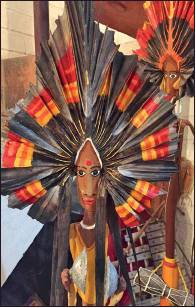

In 1971, artist Christian Uhlmann embarked on a journey from Switzerland in a minivan with seven friends. When the group reached India via Pakistan crossing the historic Wagah border, there was news about a possible war between India and Pakistan. It was barely 10 days before the Indo-Pakistan war of 1971. Uhlmann still remembers the anxiety and fear on the faces of people they met on the border after three months on the road, travelling through Turkey, Greece, Tehran, Baghdad, Kabul and Karachi.
After a brief stay in Dharamshala, the friends separated, and one group went to Nepal. Uhlmann travelled to Varanasi. After a year, the group returned to Switzerland. But Uhlmann felt drawn towards India and in 1975 he set out on his own in a car. During his second sojourn to the country, he travelled to pilgrimage centres like Varanasi and Puri (Odisha). Travelling without a map, he finally reached the southern part of India. It was at this time he got attracted to the philosophy of Ramana Mahirishi and Advaita. In Thiruvannamalai, Uhlmann began making palm leaf sculptures and paintings based on the artistic elements he developed as a hippie in his home town Winterthur, near Zurich.
After settling in Tiruvannamalai, he developed a strong relationship with the palmyra, a symbol of Tamil culture. Even though palmyra trees are widely abandoned today, Uhlmann is now trying to reinvent the status of the tree in the cultural space thorough his art. Uhlmann’s works have been exhibited in his home town in Switzerland. The 68-year-old hippie artist says he finds the meaning of life through nature using the leaves of palmyra. “Tiruvannamalai was fascinating. My relationship with the palmyra leaf began when I found someone burning the dry leaves. I thought of using the leaf and brought home a couple of them. It was challenging, but I felt a strong connection with nature whenever I worked on the leaves,”
said Uhlmann, who is happy to have found this connection with nature and does not care about sale of his art. Faces of people, particularly those he met in Tamil Nadu, have been the main subject of Uhlmann’s works. One can see faces of farmers, village women and also Tamil poet Subramania Bharathi in his artworks. “I am trying to establish the coexistence between human and nature thorough my art. I don’t know how to define my work and I don’t want to. If it connects you to nature, then I am happy,” he said.
Source: The Times of India, 01 October 2019, Chennai.